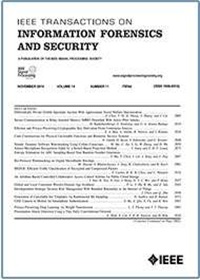Towards Unsupervised Time-Series Anomaly Detection for Virtual Cloud Networks
IF 6.3
1区 计算机科学
Q1 COMPUTER SCIENCE, THEORY & METHODS
IEEE Transactions on Information Forensics and Security
Pub Date : 2025-04-16
DOI:10.1109/TIFS.2025.3561672
引用次数: 0
Abstract
Virtual cloud network (VCN) is a fundamental cloud resource for endpoints (VMs or containers) to communicate with each other and with the outside. Anomaly detection, a key security approach for VCNs, faces serious challenges: 1) Current feature models are difficult to apply to VCNs with significant differences from traditional networks. 2) Current anomaly detection models lack the adaptability to learn multiple normal patterns simultaneously. The need to train a dedicated model for each endpoint causes serious scalability problems in VCNs. 3) Current anomaly detection models have difficulty addressing the complex temporal dependency and non-stationarity of VCNs. To address these challenges, we propose a new multilevel feature model MFM and a new unsupervised time-series anomaly detection model GTGmVAE. By combining the basic features with the topology features specifically designed for VCNs, MFM effectively characterizes the patterns of VCNs. GTGmVAE combines the new local-global feature extractor with the latent space following a Gaussian mixture distribution to achieve the strong adaptability to learn multiple normal patterns simultaneously, and achieves the strong temporal modeling capability to effectively address the complex temporal dependency and non-stationarity of VCNs by adequately modeling the global temporal dependencies of the input samples and latent variables. Extensive experiments on the VCN anomaly detection dataset CIC-IDS2018 and the time-series anomaly detection benchmark dataset SMD show that GTGmVAE with MFM achieves the desirable performance, and GTGmVAE outperforms all nine representative state-of-the-art detection models.面向虚拟云网络的无监督时间序列异常检测
虚拟云网络(VCN)是端点(vm或容器)相互通信以及与外部通信的基础云资源。异常检测作为虚拟网络安全的关键手段,面临着严峻的挑战:1)当前的特征模型难以适用于与传统网络存在显著差异的虚拟网络。2)现有的异常检测模型缺乏同时学习多个正常模式的适应性。需要为每个端点训练一个专用模型,这会导致vcn中出现严重的可伸缩性问题。3)现有的异常检测模型难以处理VCNs复杂的时间依赖性和非平稳性。为了解决这些问题,我们提出了一种新的多层特征模型MFM和一种新的无监督时间序列异常检测模型GTGmVAE。MFM通过将vcn的基本特征与专门为vcn设计的拓扑特征相结合,有效地表征了vcn的模式。GTGmVAE将新的局部-全局特征提取器与服从高斯混合分布的潜在空间相结合,实现了对多个正态模式同时学习的强适应性,并通过充分建模输入样本和潜在变量的全局时间依赖性,实现了强大的时间建模能力,有效解决了VCNs复杂的时间依赖性和非平稳性。在VCN异常检测数据集CIC-IDS2018和时间序列异常检测基准数据集SMD上进行的大量实验表明,采用MFM的GTGmVAE达到了理想的性能,并且GTGmVAE优于所有9种具有代表性的最新检测模型。
本文章由计算机程序翻译,如有差异,请以英文原文为准。
求助全文
约1分钟内获得全文
求助全文
来源期刊

IEEE Transactions on Information Forensics and Security
工程技术-工程:电子与电气
CiteScore
14.40
自引率
7.40%
发文量
234
审稿时长
6.5 months
期刊介绍:
The IEEE Transactions on Information Forensics and Security covers the sciences, technologies, and applications relating to information forensics, information security, biometrics, surveillance and systems applications that incorporate these features
 求助内容:
求助内容: 应助结果提醒方式:
应助结果提醒方式:


